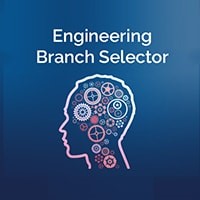CECT full form Contrast-Enhanced Computed Tomography. It is a type of medical imaging technique where a contrast agent is used to improve the visibility of internal structures in CT scans. This helps in better visualization and diagnosis of various conditions.
Definition: CECT full form
Contrast-Enhanced Computed Tomography (CECT) stands at the leading edge of current medical imaging, supplying exceptional perception into the elaborate systems of the human body. It merges the precision of Computed Tomography (CT) with the enhanced visibility afforded via evaluation retailers, revolutionizing diagnostic abilties throughout severa medical disciplines.
At its middle, CECT harnesses the principles of CT imaging, using X-ray era to seize particular pass-sectional pictures of internal organs, tissues, and blood vessels. What distinguishes CECT is the creation of contrast retailers into the bloodstream, gastrointestinal tract, or different physical structures. These marketers, normally iodine or barium-based totally, selectively take in X-rays, illuminating specific anatomical areas with extra readability and contrast.
The scientific packages of CECT are full-size and profound. In oncology, it serves as an quintessential tool for tumor detection, staging.
Principles : CECT full form
Basic CT Technology: CECT makes use of X-ray technology to generate particular move-sectional snap shots of the frame. X-rays are surpassed via the frame from more than one angles, and detectors degree the quantity of radiation that passes thru the tissues.
Image Reconstruction: The uncooked statistics collected by the CT scanner is processed by means of a pc to create cross-sectional photographs, or slices, of the body. These photos offer precise anatomical records and can be viewed in diverse orientations.
Contrast Enhancement: CECT entails the usage of contrast marketers, normally containing iodine or barium, to enhance the visibility of specific tissues or organs. These retailers are administered orally, intravenously, or rectally, relying at the location being tested.
Mechanism of Action: Contrast marketers selectively soak up X-rays, leading to elevated contrast among exclusive systems within the frame. This improved contrast lets in for higher visualization of blood vessels, organs, and tissues, aiding inside the detection and characterization of abnormalities.
Administration Routes and Protocols: The choice of assessment agent and management route relies upon on the medical indication and affected person factors. Intravenous assessment is normally used for imaging blood vessels and solid organs, at the same time as oral or rectal evaluation may be used for imaging the gastrointestinal tract.
Clinical Applications :CECT full form
Oncology: CECT plays an important role in oncology for tumor detection, staging and therapeutic research. It helps in the diagnosis of primary tumors, detection of metastasis, monitoring of tumor size and assessment of treatment response. In addition, CECT is used for preoperative planning and screening for cancer recurrence.
Cardiology: In cardiology, CECT is used to evaluate coronary artery disease (CAD), cardiac function, and structural abnormalities. It provides detailed images of coronary arteries that can detect narrowing, vasoconstriction and coronary abnormalities. CECT is also valuable for cardiac function and coronary artery bypass screening for congenital heart defects.
Neurology: CECT imaging of the brain and spinal cord helps diagnose and manage neurological conditions. It helps in the diagnosis of intracranial diseases such as stroke, hemorrhage, ischemic stroke, and vascular dysfunction. CECT can detect vertebral compression, atherosclerosis, and vertebral tumors.
Gastroenterology: CECT is commonly used in gastroenterology to evaluate the gastrointestinal tract and adjacent structures. It helps diagnose conditions such as gastrointestinal bleeding, inflammatory bowel disease (IBD), intestinal obstruction, nasty cough, and abdominal trauma. CECT is also used to diagnose gastric cancer.
Pulmonary Studies: CECT is valuable for the evaluation of pulmonary fibrosis, large vessels, and interstitial lung disease. It helps in the distinction between benign and malignant pulmonary lesions, in the assessment of lung weight, and in the diagnosis of pulmonary edema. CECT is also used for preoperative planning in lung cancer patients.
Precaution: CECT full form
| Precaution | Details |
|---|---|
| Patient History | Ensure the patient’s history includes any previous reactions to contrast agents, allergies, or kidney issues. |
| Renal Function | Assess kidney function before administering contrast, especially in patients with pre-existing renal conditions. |
| Hydration | Encourage the patient to stay hydrated before and after the scan to help flush the contrast agent from the body. |
| Contrast Agent Allergy | Be aware of potential allergic reactions to contrast agents. Have emergency protocols in place for immediate response. |
| Pregnancy | Confirm if the patient is pregnant or might be pregnant. Use CECT only if absolutely necessary, considering fetal exposure to radiation. |
| Medication Interactions | Review current medications that might interact with the contrast agent or affect renal function. |
| Diabetes | Monitor diabetic patients closely, as some contrast agents can affect blood sugar levels or renal function. |
| Pre-scan Instructions | Inform the patient about the procedure, including fasting requirements and the need to hold still during the scan. |
| Contrast Injection Site | Ensure proper technique and hygiene when injecting the contrast agent to prevent complications such as extravasation. |
| Monitoring | Continuously monitor the patient during and after the scan for any adverse reactions or side effects from the contrast agent. |
| Post-scan Care | Advise the patient to report any unusual symptoms or reactions after the procedure and to drink plenty of fluids. |
Purpose : CECT full form
Tumor Detection and Evaluation: CECT enhances the visibility of tumors by supplying clearer and more targeted images of extraordinary hundreds. This advanced evaluation helps in differentiating tumors from surrounding tissues, assessing the size, place, and quantity of the ailment, and determining whether or not the tumor has unfold to nearby systems.
Vascular Imaging: The use of assessment dealers in CECT allows for distinct visualization of blood vessels. This is essential for identifying and evaluating situations which includes aneurysms, blood clots, arterial blockages, and vascular malformations, in addition to for making plans and tracking interventions involving the vascular machine.
Trauma Assessment: In emergency situations, CECT is invaluable for assessing internal injuries as a consequence of trauma. It provides detailed pictures of the organs, bones, and blood vessels within the chest and abdomen, assisting to quick become aware of internal bleeding, organ harm, or fractures and manual treatment choices.
Infection and Inflammation: CECT is effective in detecting and characterizing infections and inflammatory conditions by way of highlighting areas of ordinary tissue density and enhancement. It facilitates in diagnosing conditions like abscesses, cellulitis, and inflammatory bowel sickness, as well as in monitoring the reaction to treatment.
Pre-surgical Planning: For surgical making plans, CECT gives excessive-decision pix that help surgeons recognize the precise anatomy of the area of hobby. This detailed visualization aids in making plans surgical methods, figuring out anatomical landmarks, and waiting for capacity headaches, thereby improving surgical consequences.
Cost: CECT full form
| Factor | Details | Estimated Cost Range |
|---|---|---|
| Location | Costs vary by region, with urban areas generally more expensive than rural ones. | $300 – $3,000 USD |
| Healthcare Facility | Prices differ between hospitals, imaging centers, and private clinics. | $400 – $2,500 USD |
| Type of Scan | Different scans (e.g., brain, abdomen, chest) may have varying costs. | $400 – $1,500 USD |
| Contrast Agent | Some facilities include the cost of the contrast agent in the total fee, while others charge separately. | $50 – $500 USD (if charged separately) |
| Insurance Coverage | The amount covered by insurance can impact out-of-pocket costs. | Varies; often $0 – $1,000 USD |
| Additional Costs | May include fees for interpreting results, follow-up consultations, or additional imaging. | $100 – $1,000 USD |
| Urgency | Emergency or urgent scans might be more expensive due to expedited services. | $500 – $3,000 USD |
Procedure : CECT full form
| Step | Description |
|---|---|
| 1. Patient Preparation | Review patient’s medical history and allergies, especially to contrast agents. Instruct the patient to fast for a specified period (usually 4-6 hours) before the scan if required. Ensure proper hydration to help flush the contrast agent from the body post-procedure. |
| 2. Consent and Explanation | Explain the procedure, its purpose, and potential risks to the patient. Obtain written informed consent. |
| 3. Administration of Contrast Agent | Choose the appropriate contrast agent (iodine-based or barium-based) and administration route (intravenous, oral, or rectal). For intravenous administration, insert an IV line; for oral or rectal, instruct the patient accordingly. |
| 4. Positioning the Patient | Position the patient on the CT scanner table, ensuring they are comfortable and still. Secure the patient with straps if necessary to prevent movement during the scan. |
| 5. Initial Scanning | Perform a preliminary scan without contrast to obtain baseline images. Adjust scanner settings based on the initial images and specific diagnostic needs. |
| 6. Contrast Injection | Administer the contrast agent: Intravenous – Inject at a controlled rate using an automated injector. Oral/Rectal – Ensure the patient has ingested the contrast agent at specified intervals before scanning. |
| 7. Main Scanning | Conduct the main scan as the contrast agent circulates or reaches the targeted area. Acquire multiple images at different time intervals to capture the dynamic flow of the contrast agent. |
| 8. Post-Procedure Monitoring | Monitor the patient for any immediate adverse reactions to the contrast agent, such as allergic reactions or discomfort. Provide post-procedure instructions, including hydration advice to aid in the elimination of the contrast agent. |
Advantage: CECT full form
Enhanced Visualization:
Provides improved comparison between exclusive tissues, enhancing the visibility of blood vessels, organs, and pathological areas.
Accurate Diagnosis:
Increases diagnostic accuracy via honestly delineating systems and abnormalities that may not be visible on non-enhanced CT scans.
Tumor Detection and Staging:
Facilitates early detection and particular staging of tumors, helping in treatment planning and tracking of healing response.
Vascular Imaging:
Excellent for visualizing vascular systems, figuring out blockages, aneurysms, and different vascular situations.
Detailed Anatomy:
Offers high-resolution images that offer distinctive anatomical facts, essential for surgical planning and intervention.
Non-Invasive:
A non-invasive process that reduces the need for exploratory surgeries and invasive diagnostic procedures.
Quick Acquisition:
Rapid picture acquisition permits for short analysis, which is vital in emergency situations such as trauma or stroke.
Disadvantage
| Disadvantage | Description |
|---|---|
| Radiation Exposure | CECT involves exposure to ionizing radiation, which can increase the risk of cancer, particularly with repeated scans. |
| Allergic Reactions | Some patients may experience allergic reactions to the contrast agents, ranging from mild (rash, itching) to severe (anaphylaxis). |
| Nephrotoxicity | Contrast agents, especially iodine-based ones, can cause kidney damage or exacerbate pre-existing kidney conditions, leading to contrast-induced nephropathy. |
| Cost | CECT scans are generally more expensive than standard CT scans due to the use of contrast agents and the need for additional imaging sequences. |
| Limited Use in Pregnancy | Due to potential risks to the fetus from radiation and contrast agents, CECT is usually avoided in pregnant women unless absolutely necessary. |
| Contrast Agent Side Effects | Potential side effects of contrast agents include nausea, vomiting, headache, and a metallic taste in the mouth. |
| Not Suitable for All Patients | Some patients, such as those with severe kidney disease, hyperthyroidism, or certain allergies, may not be suitable candidates for CECT. |
| Motion Artifacts | Movement during the scan can cause artifacts, leading to degraded image quality and potentially inaccurate diagnosis. |
| Preparation Requirements | Patients often need to fast and may require special preparation, which can be inconvenient and uncomfortable. |
| Injection-Related Issues | Intravenous administration of contrast agents can sometimes cause discomfort, bruising, or infection at the injection site. |
Challenges
Radiation Risk:
Managing the chance of ionizing radiation publicity, especially with repeated scans, is a widespread task. Ensuring radiation doses are saved as low as moderately possible (ALARA) is crucial.
Allergic Reactions to Contrast Agents:
Addressing the potential for allergies, which can variety from mild to intense, requires cautious affected person screening and readiness to manipulate anaphylactic reactions.
Nephrotoxicity:
Preventing comparison-induced nephropathy, particularly in patients with pre-present kidney conditions, entails careful evaluation and likely pre-procedural hydration protocols.
Cost and Accessibility:
The better value of CECT in comparison to conventional CT scans can limit accessibility for some sufferers and healthcare centers, in particular in useful resource-restrained settings.
Patient Preparation:
Ensuring patients adhere to education instructions, along with fasting and hydration, can be hard but is essential for highest quality picture exceptional and patient protection.
Technological and Equipment Requirements:
Maintaining and operating advanced CT system with comparison capabilities calls for giant funding and technical knowledge.
Motion Artifacts:
Minimizing motion artifacts, specifically in sufferers who can’t remain nonetheless, is vital for acquiring clear photographs. Techniques to control this include faster scanning protocols and affected person instructions.
FAQ's
Q1:What is Contrast-Enhanced Computed Tomography (CECT)?
A: CECT is a type of CT scan that uses a contrast agent to improve the visibility of internal organs, blood vessels, and tissues, enhancing the diagnostic accuracy.
Q2:How does a contrast agent work in CECT?
A: contrast agent, usually containing iodine or barium, is administered to the patient. It absorbs X-rays more than the surrounding tissues, making specific areas more visible on the CT images.
Q3:Why is CECT preferred over standard CT scans in certain cases?
A: CECT provides clearer, more detailed images, which are crucial for detecting and characterizing conditions such as tumors, infections, and vascular diseases that may not be as visible on standard CT scans.
Q4:Are there any risks associated with CECT?
A: Potential risks include allergic reactions to the contrast agent, nephrotoxicity (especially in patients with kidney issues), and minimal radiation exposure. However, the benefits usually outweigh the risks for most patients.
Q5:How should a patient prepare for a CECT scan?
A: Patients may be advised to avoid eating or drinking for a few hours before the scan. They should inform their doctor about any allergies, medications, and pre-existing health conditions, particularly kidney problems.



















